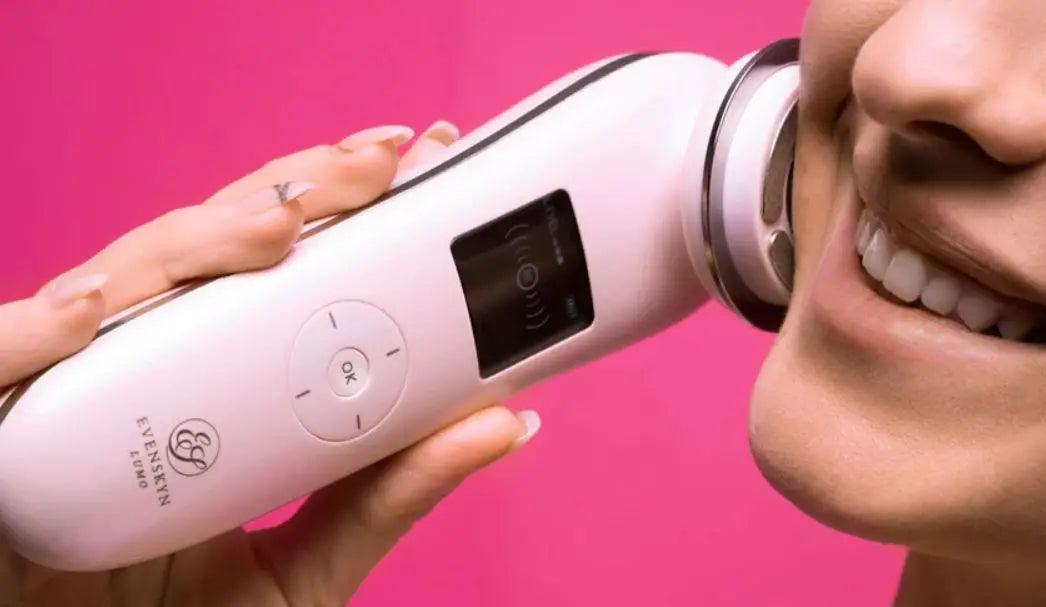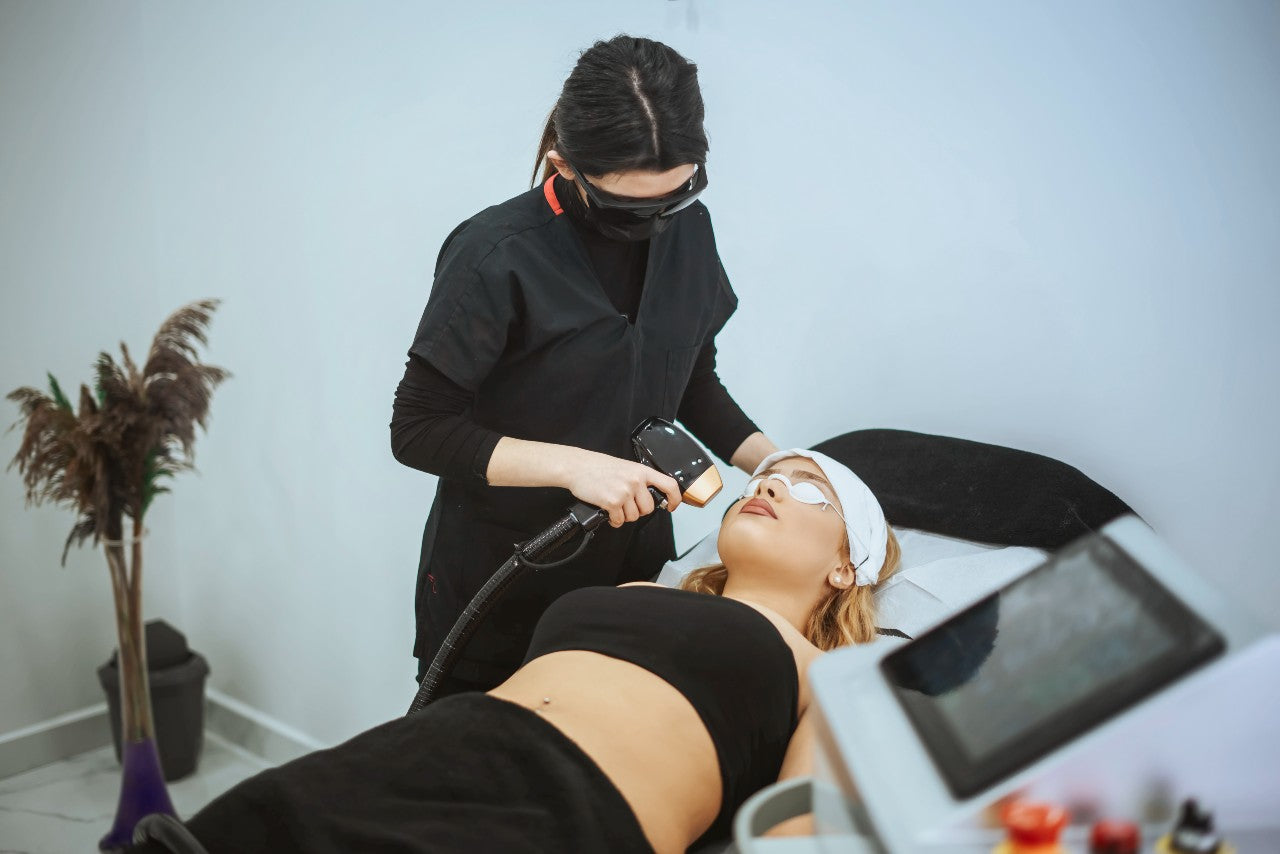Medically Reviewed by Dr. Lisa Hartford, MD
Our cells' complex energy production process has long intrigued our scientists and researchers. Unlocking the procedures that govern cellular energetics holds promise for improvements in medical treatments and health.
Microcurrent therapy is a gentle and non-invasive method that uses low-level electrical impulses to promote cell and tissue growth. Therefore, you do not have to worry about scars. This approach has intrigued the interest of many because it helps in producing adenosine triphosphate (ATP). Remember that ATP is a fundamental source of cellular energy.
Keep reading further to know more about the relationship between microcurrent therapy and cellular energetics.
Understanding cellular energetics and ATP
First, grasp the basics of cellular energetics to understand the effect of microcurrent on ATP production. Cellular energetics focuses on generating, distributing, and utilizing energy in cells. ATP is a small, versatile molecule of adenosine and three phosphate groups. The next step involves hydrolyzing ATP whenever a cell requires energy.
ATP hydrolyzes by breaking off one phosphate group, producing ATP and liberating energy. This energy is then used to power various cellular processes.
The role of microcurrent in cellular energetics
It is important to note that the relationship between microcurrent and ATP production centers around its ability to influence cellular function and promote energy balance in the cells. The relationship is direct, related simply to the ability of MTC to increase ATP, which stimulates tissue growth. Here are some points that explain the role of microcurrent in cellular energetics:
Enhanced cellular communication
Microcurrents improve cellular communication by supporting the exchange of ions and signaling molecules important for maintaining cellular homeostasis. This improved communication leads to increased ATP production and utilization within cells.
Mitochondrial stimulation
Now, microcurrent therapy enhances mitochondrial function, potentially optimizing oxidative phosphorylation and ATP production. This is because mitochondria is the powerhouse of the cell and that makes it possible for your body to produce more ATP.
Cellular membrane potential
Since microcurrents may impact the electrical features of cell membrane, this alteration could impact ATP production. This affects electrochemical gradients necessary for ATP synthesis.
Microcurrent Therapy: a glimpse into its mechanisms
Microcurrent therapy, also known as microcurrent electrical stimulation, applies low-level electrical impulses to specific places on the body or targeted tissues. These currents regulate cellular function and promote healing by mimicking the body's natural electrical impulses.

When these natural electrical signals are disrupted by injury, inflammation, or other imbalances, microcurrent therapy tries to restore them, thereby helping the body's fundamental healing mechanisms.
To create a healing environment, microcurrent therapy modulates the flow of ions. This modulation affects the cell's electrical charge leading to required cellular repairs. Microcurrent therapy influences cellular ion channels, which are protein molecules spanning the cell membrane.
Challenges of microcurrent therapy
Microcurrent therapy, along with supporting cellular energetics, faces some challenges as well. Therefore, for proper utilization of the therapy, it is essential to overcome these challenges:
Varying cellular response
With different human beings, the level of cellular communication may also differ. Some may have different ion channel activity or overall cellular health. Therefore, microcurrent therapy may affect different people in different manners.
Depth of penetration
Microcurrents may face limitations in penetrating deep tissues, particularly in areas with dense muscle or adipose tissue. This may hinder their ability to reach target cells, especially in cases where the treatment requires stimulation of deeper tissues or organs.
Optimal current intensity and frequency
Determining the optimal current intensity and frequency for different cellular applications is critical. Too low intensity may not produce significant cellular effects, while excessively high currents can lead to cellular damage.

Finding the right balance and device requires a nuanced understanding of cellular responses to microcurrent stimulation. EvenSkyn Lumo: Premium Anti-Aging & Skin Tightening Handset can prove beneficial to perform better microcurrent therapeutic procedures.
Evidence to support the research
The relationship between microcurrent therapy and cellular energy production by synthesis of ATP has proven beneficial. You may clarify the statement by many case studies mentioned below.
Extensive research done by data collection study mentioned in their surveys that 94% of patients out of 1531 experienced pain reduction with no side effects during their first treatment. However, patients who quit before achieving desirable results faced problems, and their pain returned.
After conducting research on both animal and human groups, it was concluded that the state of any physical damage on the skin in these groups returned to its normal state after some time. The results suggested that normal tendon cell activity may require a week to heal, and the increased damage can go up to 42 days.
After conducting a successful study on thirty subjects, the researchers came up with results that stated that microcurrents applied to the shoulders are more efficient in smoothing EEG patterns than placebo or earlobe.
Benefits of microcurrent therapy
Given its potential influence on ATP production and cellular energetics, microcurrent therapy has found applications in various fields, including:
Wound healing
The stimulation of cellular communication and ATP production through microcurrent therapy may promote faster wound healing and tissue regeneration.

Skin rejuvenation
Some aesthetic applications of microcurrent therapy suggest that it can improve skin elasticity and tone, possibly due to enhanced cellular metabolism and ATP synthesis.
Conclusion
Now you know that the relationship between microcurrent therapy and ATP production plays an important role in producing cellular energy. Microcurrent positively influences cellular function and potentially enhances ATP production. After a thorough study, it may be concluded that microcurrent therapy may give you better results than any invasive treatment.
As technology advances, microcurrent therapy may emerge as a valuable tool for optimizing cellular energetics, promoting healing, and improving overall well-being.
References
Dunn J, Grider MH. “Physiology, Adenosine Triphosphate.” 2023 Feb 13.
Yu, C., Hu, Z. Q., & Peng, R. Y. “Effects and mechanisms of a microcurrent dressing on skin wound healing: a review.” 2014
Kolimechkov, S., Seijo, M., Swaine, I., Thirkell, J., Colado, J. C., & Naclerio, F. 2023
Libretti S, Puckett Y. “Physiology, Homeostasis.” 2023 May 1.
Kolimechkov, S., Seijo, M., Swaine, I. et al. “Physiological effects of microcurrent and its application for maximising acute responses and chronic adaptations to exercise.” 2023.
Data collection study, “Microcurrent therapy” Lynn A. Wallace, PT.









Leave a comment
All comments are moderated before being published.
This site is protected by hCaptcha and the hCaptcha Privacy Policy and Terms of Service apply.